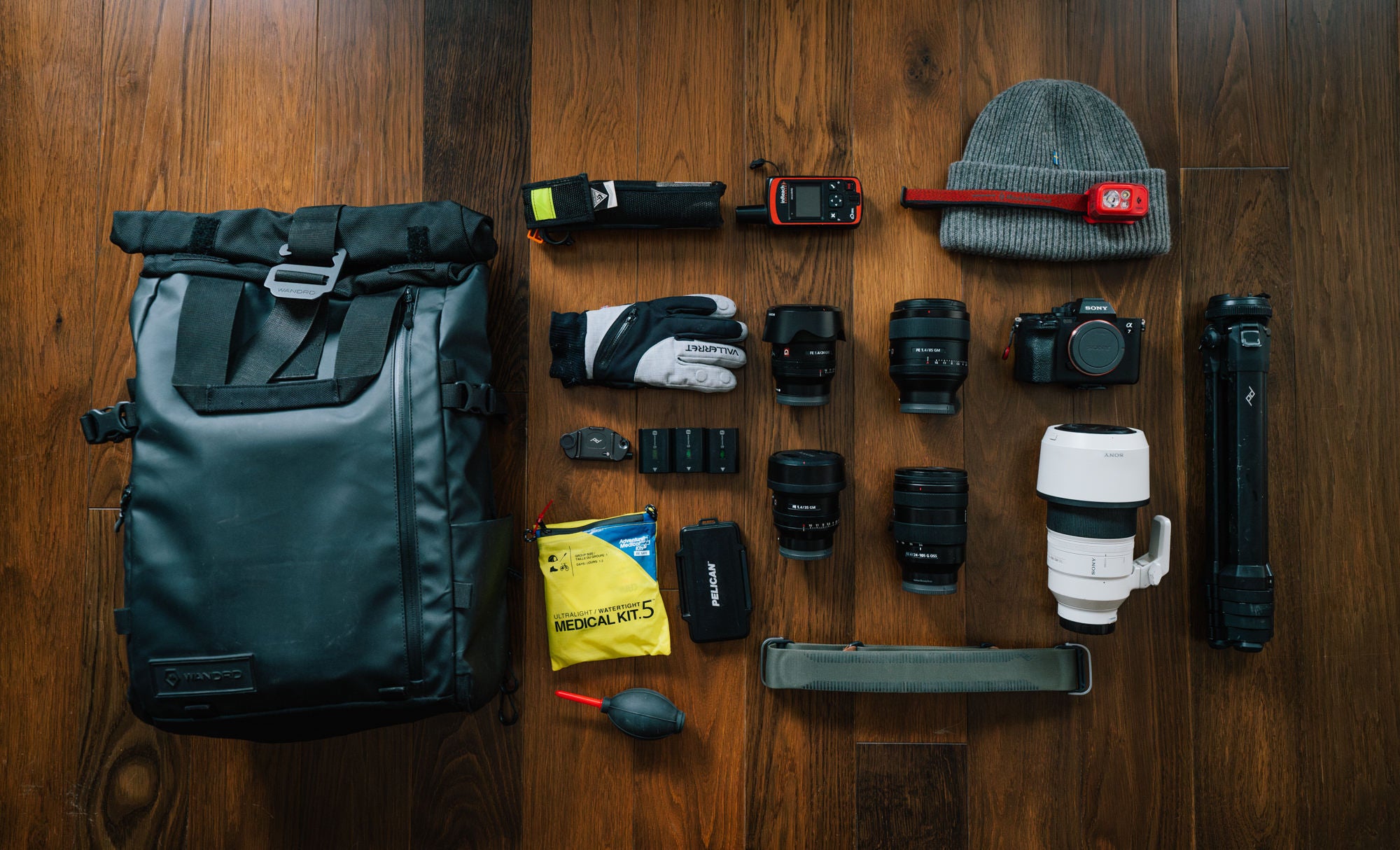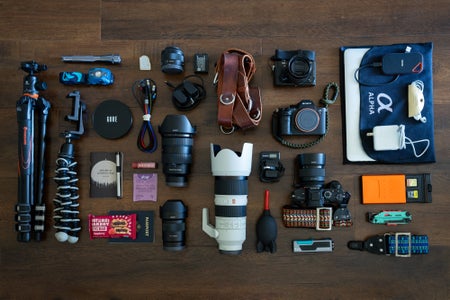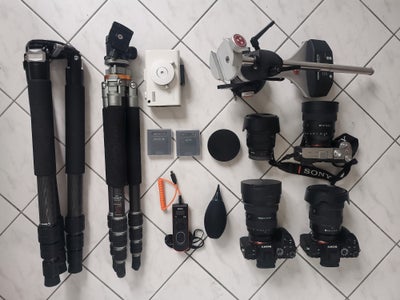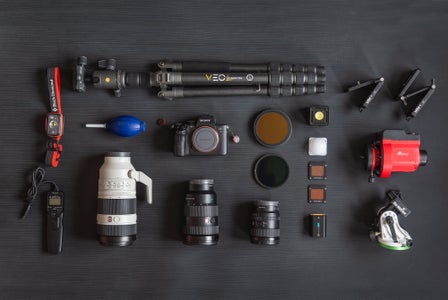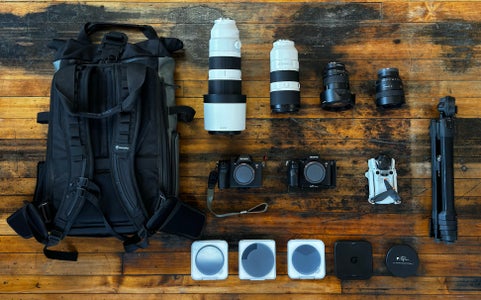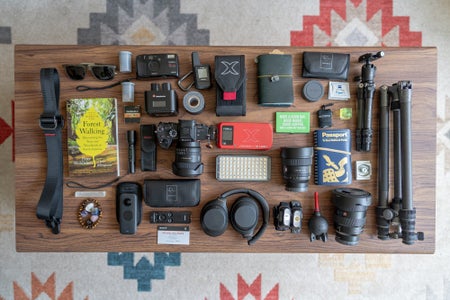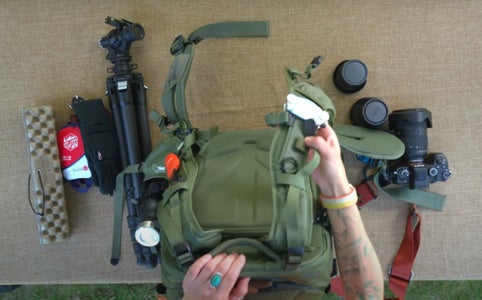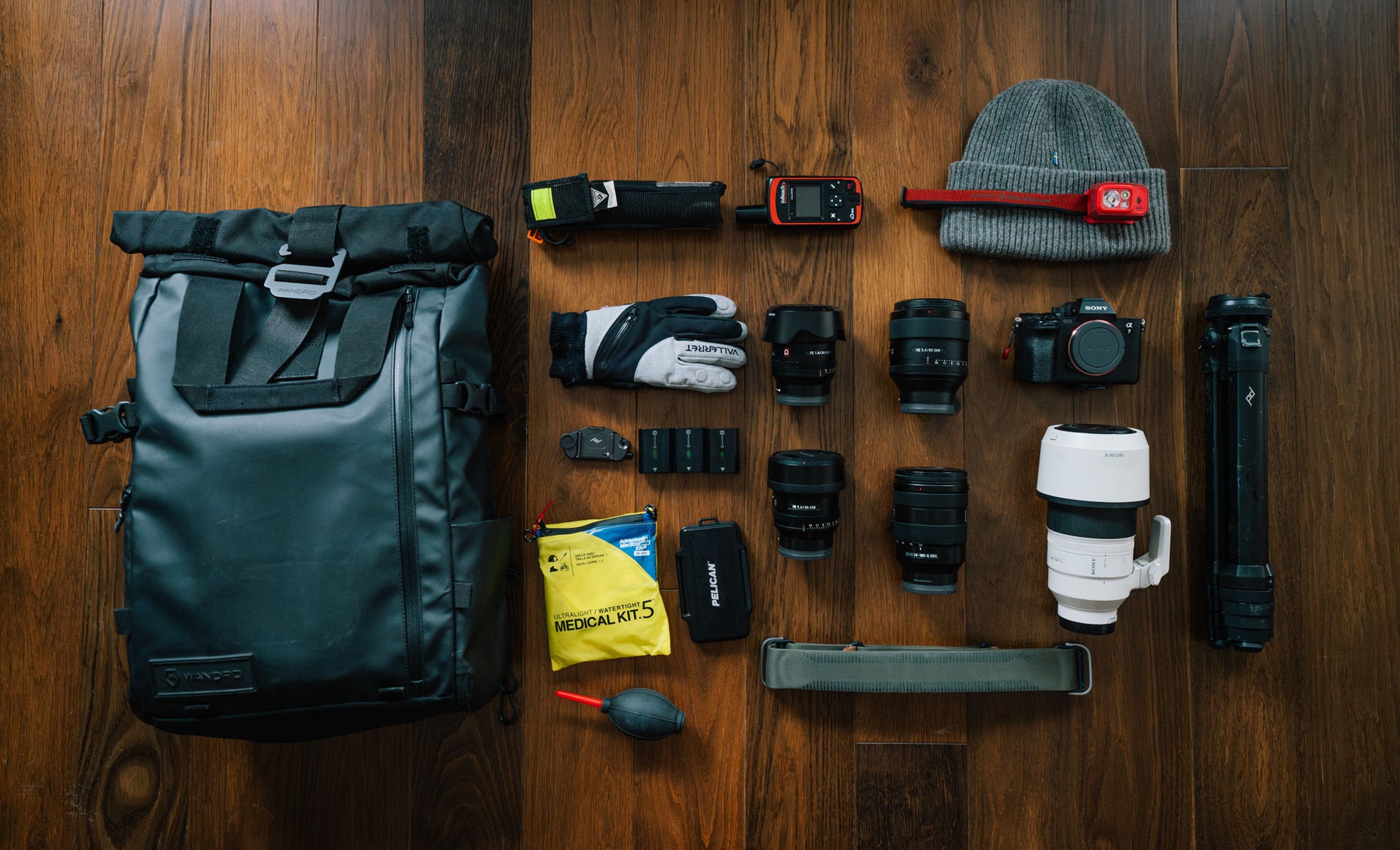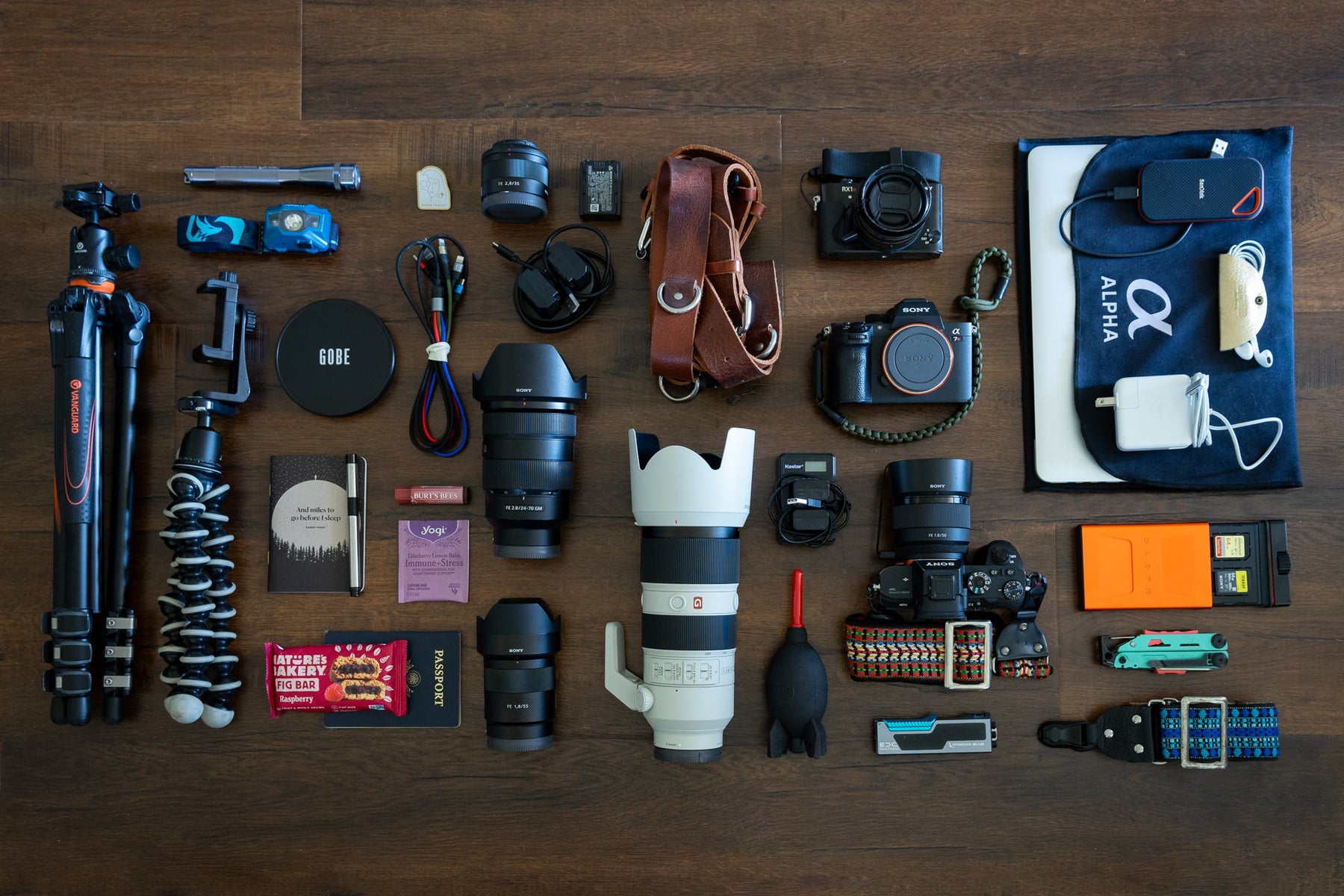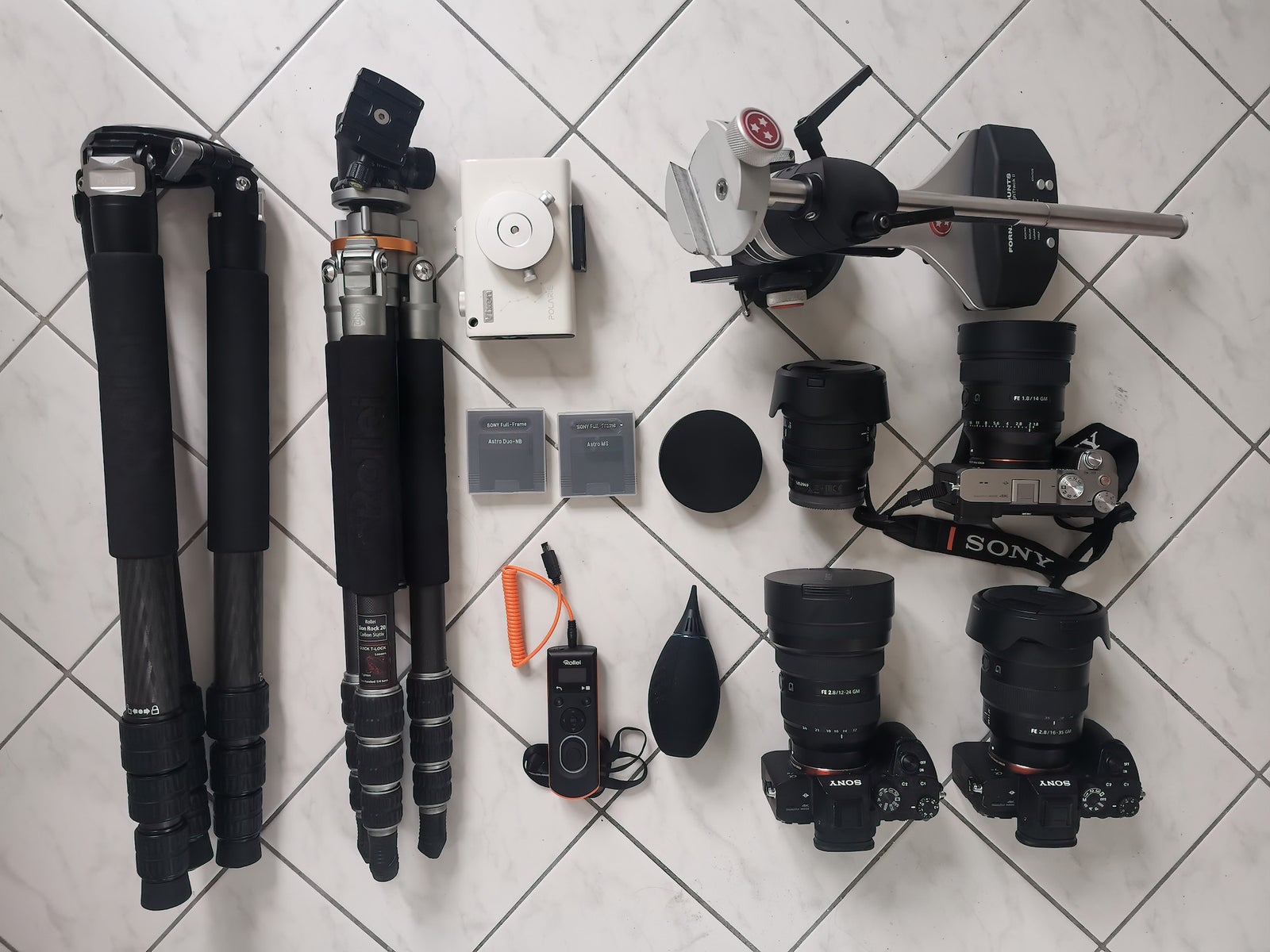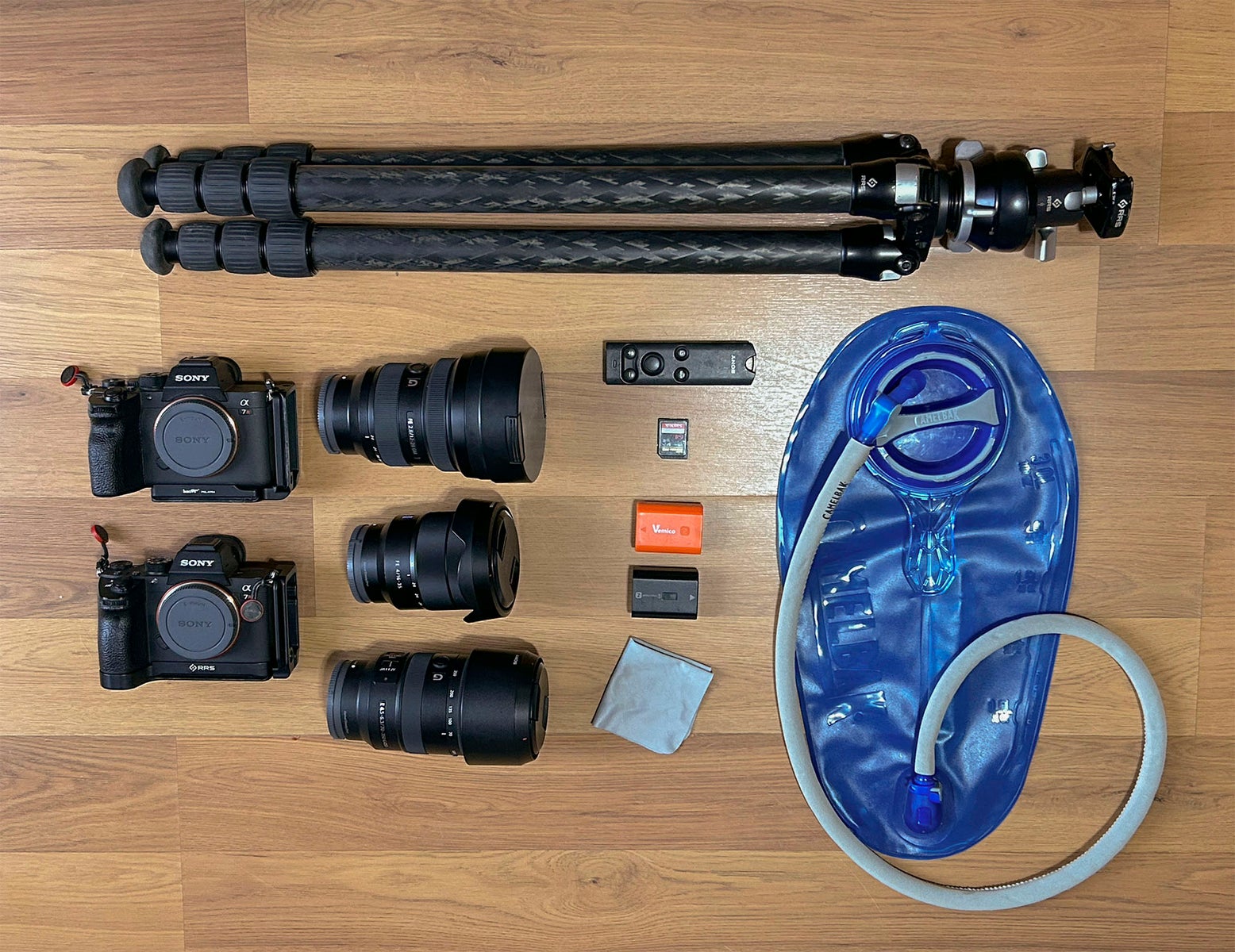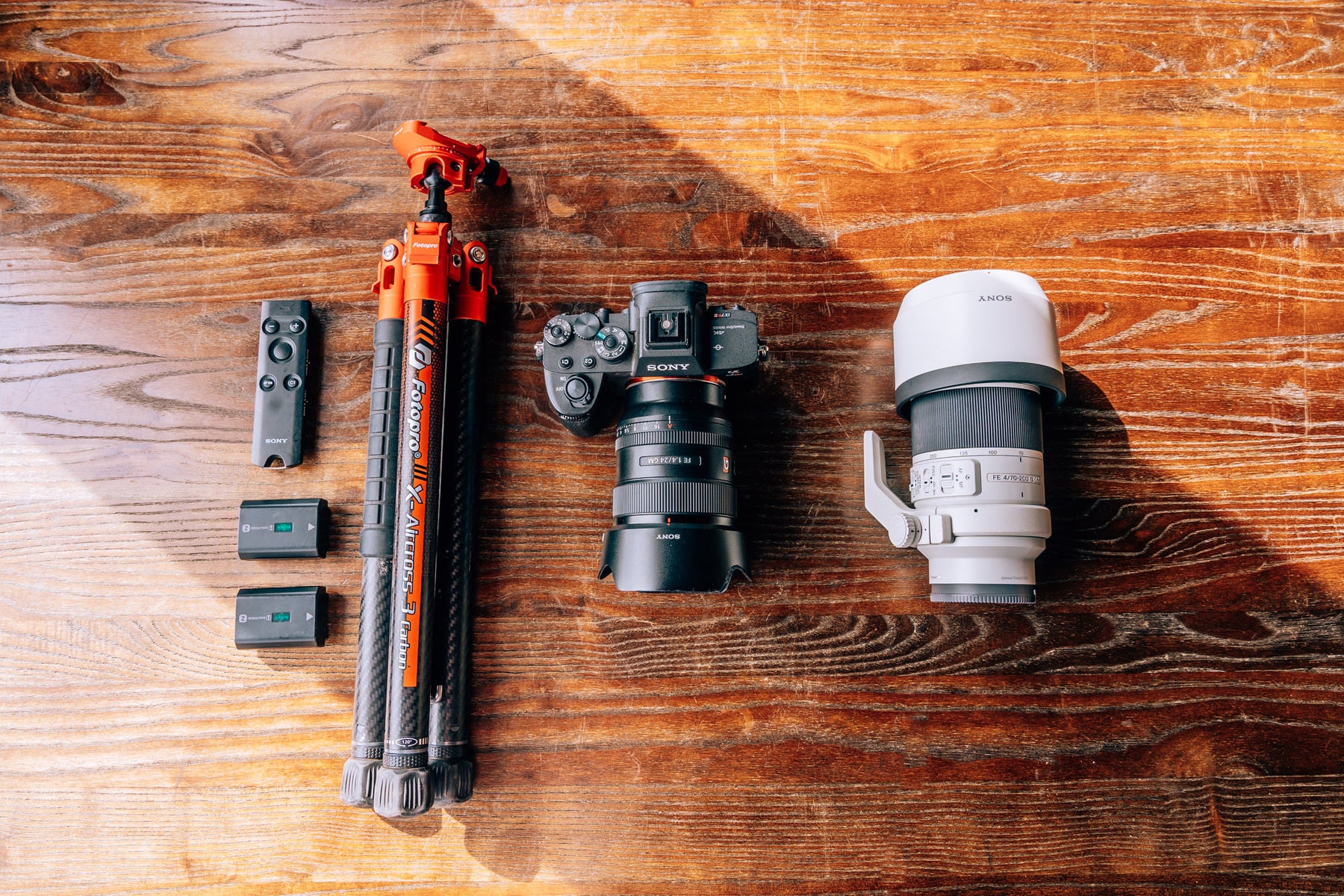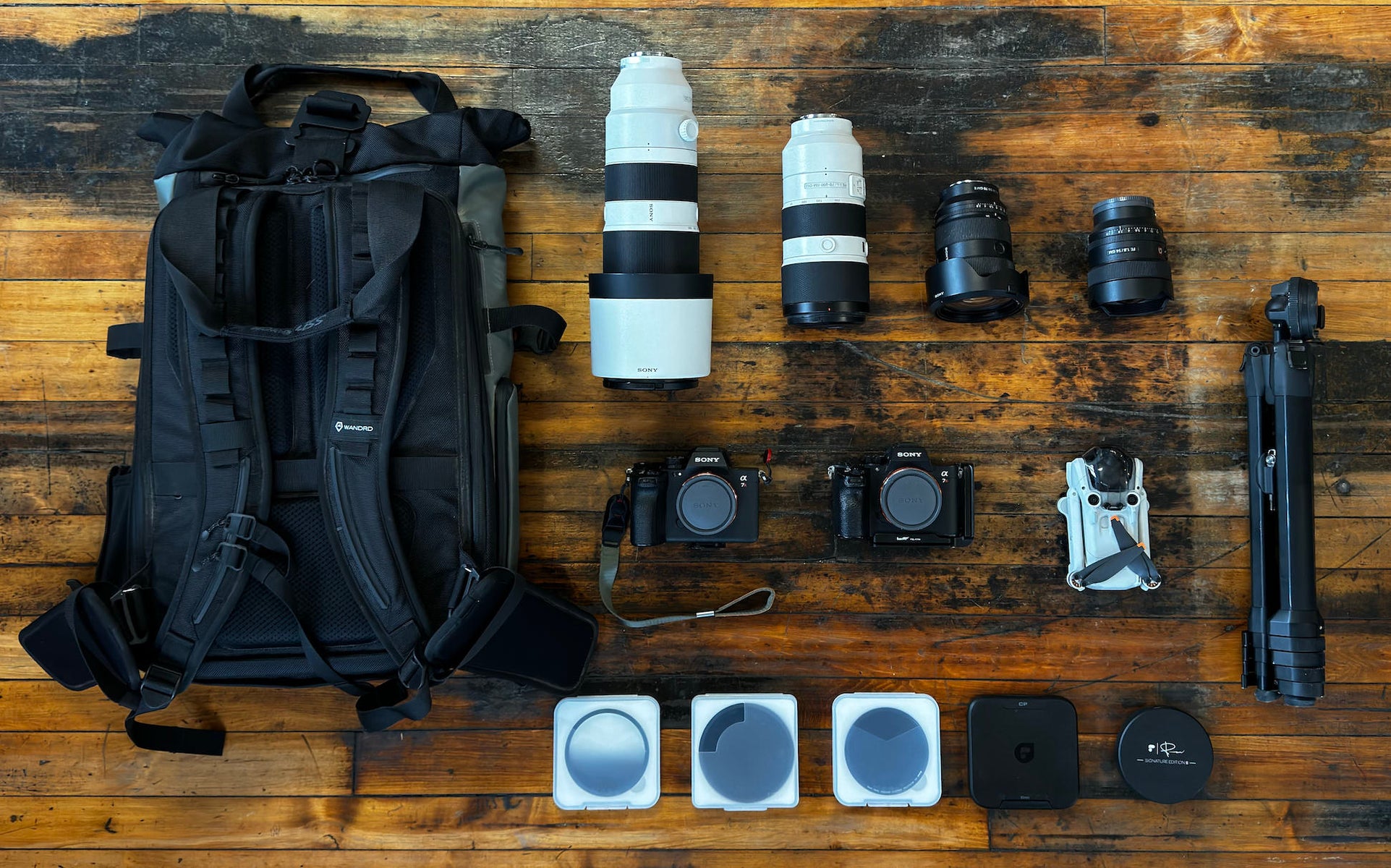Choosing the right gear for shooting astrophotography is integral to the final result. You want to have a camera that excels in low-light conditions and can handle long exposure times while minimizing noise and a fast lens that's sharp to the edge of the frame when used wide open. Below we take a look at 10 kits from creators who shoot a lot of astrophotography to get their insights on the cameras, lenses and other gear that makes something challenging look easy. See what they bring along and get inspired to capture the night sky yourself.
Whichever camera and lens combination you use under the night sky, we have one over-arching tip from seasoned astrophotographer and Sony Alpha Ambassador Autumn Schrock. “If you’re new to astrophotography, one piece of advice I would give is to be very familiar with your camera,” she says. “Play around with it at home first, make sure you know how to adjust all of your settings, your aperture, everything like that, before you go out and try to do everything at night because it’s very difficult in the dark.”
Get more "kit-spiration" at alphauniverse.com/wimb.
Astrophotography demands gear that excels in low-light, offers high ISO and handles long exposures. See what these night shooters choose to get the job done.
The “Maximize Your Time” Astro Kit
Photographer and Sony Alpha Ambassador Autumn Schrock (@autpops) has trekked all over the world capturing beautiful scenes of the night sky. She prefers to pack the Sony Alpha 1 camera for astrophotography, using the self-timer feature to avoid any camera shake. She also packs two prime lenses, the Sony 14mm f/1.8 G Master, which she calls her favorite astro lens, and the Sony 20mm f/1.8 G, her second go-to for sharp stars. She even brings along two zooms, the Sony 24-70mm f/2.8 G Master II and Sony 100-400mm f/4.5-5.6 G Master when she goes out to shoot astrophotography so she can maximize the time and also capture sunset. Watch the video below for her full astro kit breakdown and read more in Take A Look Inside Autumn Schrock’s Bag At The Gear She Uses For Astrophotography.
The Low-Light Long Exposure Astro Kit
Creator and Sony Alpha Ambassador Michael Hollender (@mrhollender) says his love of photography, long exposure and the outdoors has brought him to 54 different National Parks, where he’s captured so much of their beauty both day and night. He prefers to use the Sony Alpha 7R IV camera for its high resolution, speed and reliability. His two go-to prime lenses for astrophotography include the Sony 14mm f/1.8 G Master and Sony 20mm f/1.8 G. Read more and see some of his astro work in What’s In My Bag: 2 Primes & 2 Zooms For Travel, Landscape, Astro & More.
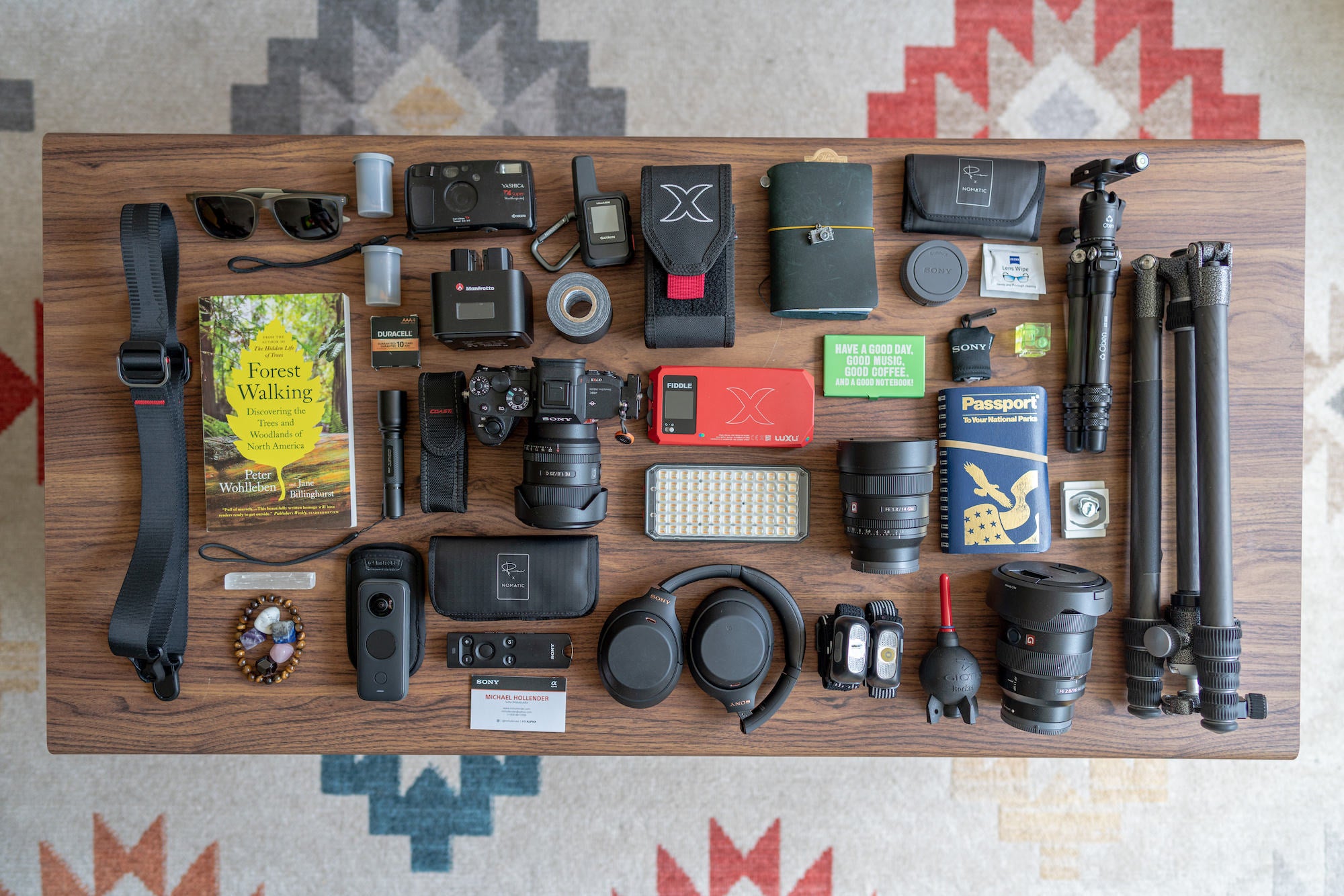
The Lightweight Full-Range Astro Kit
Bret Blakely (@bretblakely) shoots a variety of subjects for photography, and when shooting the stars, he says the Sony Alpha 7R V is his go-to because of its ISO range and performance in low light. He likes to use the Sony 14mm f/1.8 G Master to incorporate a foreground element into his astroscapes. He also likes to use the Sony 24-70mm f/2.8 G Master II for astrophotography. “This is a beast of a lens. It has the sharpness, depth and quality that I have come to expect from every Sony lens but on top of that it is a perfect all around lens…especially if I want or need to pack light for a hike.” He says its f/2.8 aperture combined with its lightness and size makes it a wonderful choice for astrophotography. Read more about what he has to say and see some of his images in What’s In My Bag: From 14mm to 600mm, This Landscape, Astro & Wildlife Photo Kit Covers It All.
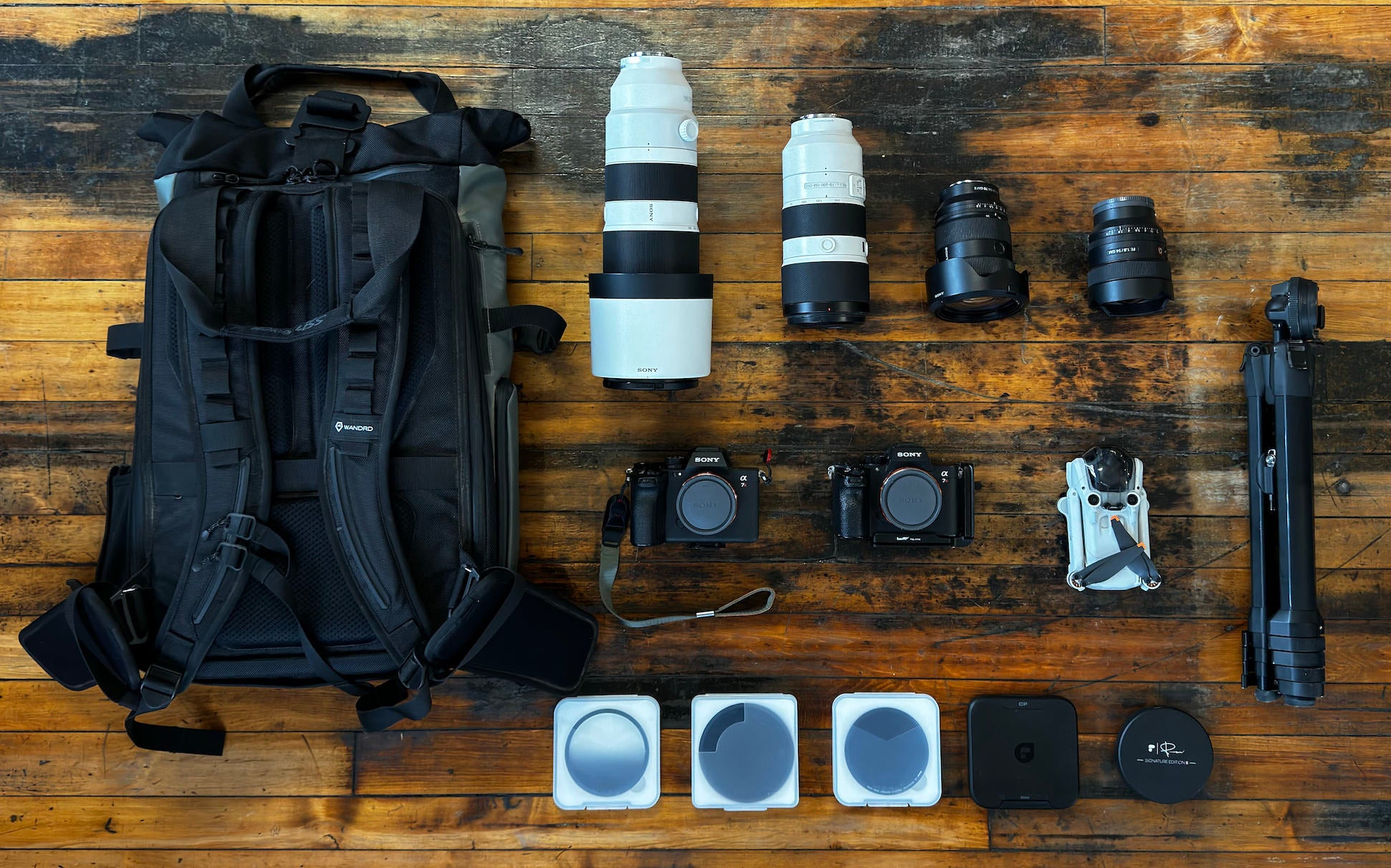
The All-Around Astro Kit
After a friend helped teach Susan Brudd (@hike4beauty) how to shoot astrophotography, she became completely enamored with it. "There's something about seeing the Milky Way in your camera for the very first time that is absolutely mind-blowing and I was immediately obsessed. I find astrophotography incredibly whimsical and it's a real chance to let my creative imagination fly." She uses the Sony Alpha 7R IV camera for all of her photography needs, and for astro you’ll find the Sony 24mm f/1.4 G Master attached to it for sharp star shots, as well as the Sony 70-200mm f/4 G for moon and deep space astrophotography. Read more about her complete kit in What's In My Bag: A Zoom & A Prime For Travel, Wildlife, Landscape & Astrophotography.

The G Master Zoom Astro Kit
Colorado-based photographer Steve Hamm (@stephenhammphotography) captures expansive landscapes and astroscapes. He packs both the Sony Alpha 7R IV and Sony Alpha 7R III in his kit, and for astrophotography the Sony 12-24mm f/2.8 G Master is his go-to. “This is by far my favorite lens. It is always attached to my Alpha 7R IV. I am able to get within inches of my subject. The curvature of the glass is perfect for adding depth and distortion to the subject. 24mm Is ideal for bringing the background closer in the scene. It is also fast. I am able to capture the tons of light from the Milky Way. It is on the heavy side at 2 lbs. But it isn't enough to notice while backpacking. You will always find this lens in my bag, with no exceptions.” Read more about his full photo kit and see more of his work in What’s In My Bag: 2 Cameras & 3 Zooms To Capture Expansive Landscapes & Astroscapes.

The Classic Astro Kit
Matt Franklin (@mattfranklinphoto) is an Oregon-based photographer who captures beautiful scenes on his travels. He uses the Sony Alpha 7R III for its larger sensor, lighter weight, and most importantly, performance in lower light. He likes to pair the Sony 24-70mm f/2.8 G Master and the Sony 20mm f/1.8 G with the camera when shooting astrophotography. He especially calls the 20mm a gamechanger for his astrophotography, saying he wishes he would’ve bought it sooner! Read more about his gear for astro and see some of his images in What’s In My Bag: A Travel Photographer's Sony Kit For Landscape, Astro & More.
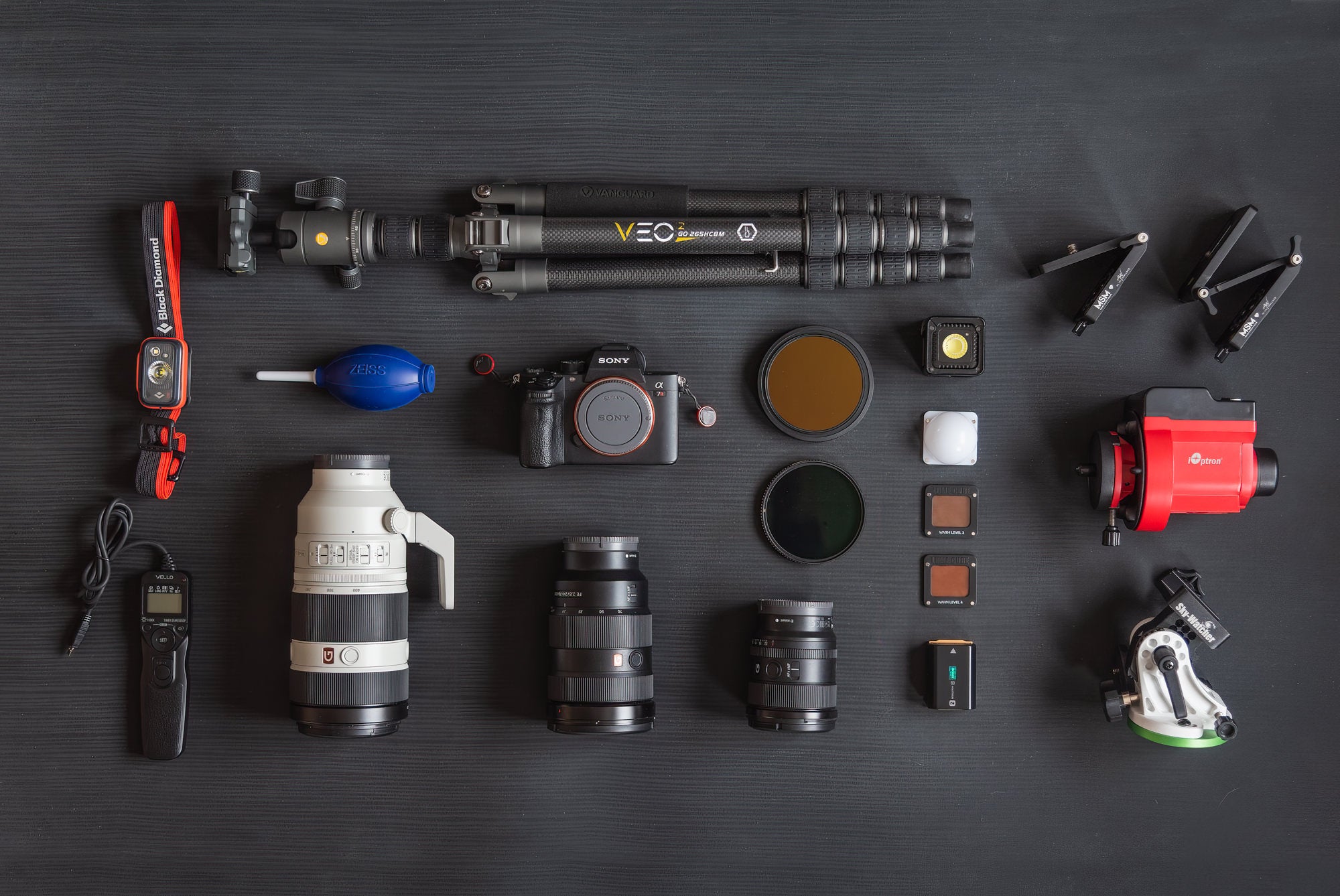
The Deep Space Astro Kit
Physicist and photographer Stefan Liebermann (@stefanliebermannphoto) captures mesmerizing astro-landscapes and deep sky images. He’s previously used the Sony Alpha 7 III as his main camera and found in his kit photo below, but has recently upgraded to the high-resolution Sony Alpha 7R V for astrophotography. He likes to pair it with the Sony 24mm f/1.4 G Master and Sony 14mm f/1.8 G Master for stunning Milky Way-filled panoramas and more. Check out his complete kit and see his work in What’s In My Bag: A Sony Alpha Kit For Mesmerizing Astro-Landscapes & Beyond.

The Travel Astro Kit
Kirsten Alana (@kirstenalana) is a travel photographer whose diverse interests, and wide-ranging client base, make it possible for her to shoot something different every week. One of the subject’s on that list happens to be the night sky, as she frequently creates beautiful astro imagery with her travel kit. She often uses the Sony Alpha 7R III paired with the Sony 24-70mm f/2.8 G Master when shooting astro, but that’s not all, she also creates stunning star images with her Sony RX1R II. Check out all of her gear and some of her work in What's In My Bag: A Travel Photographer's Kit To Cover Something Different Each Week.
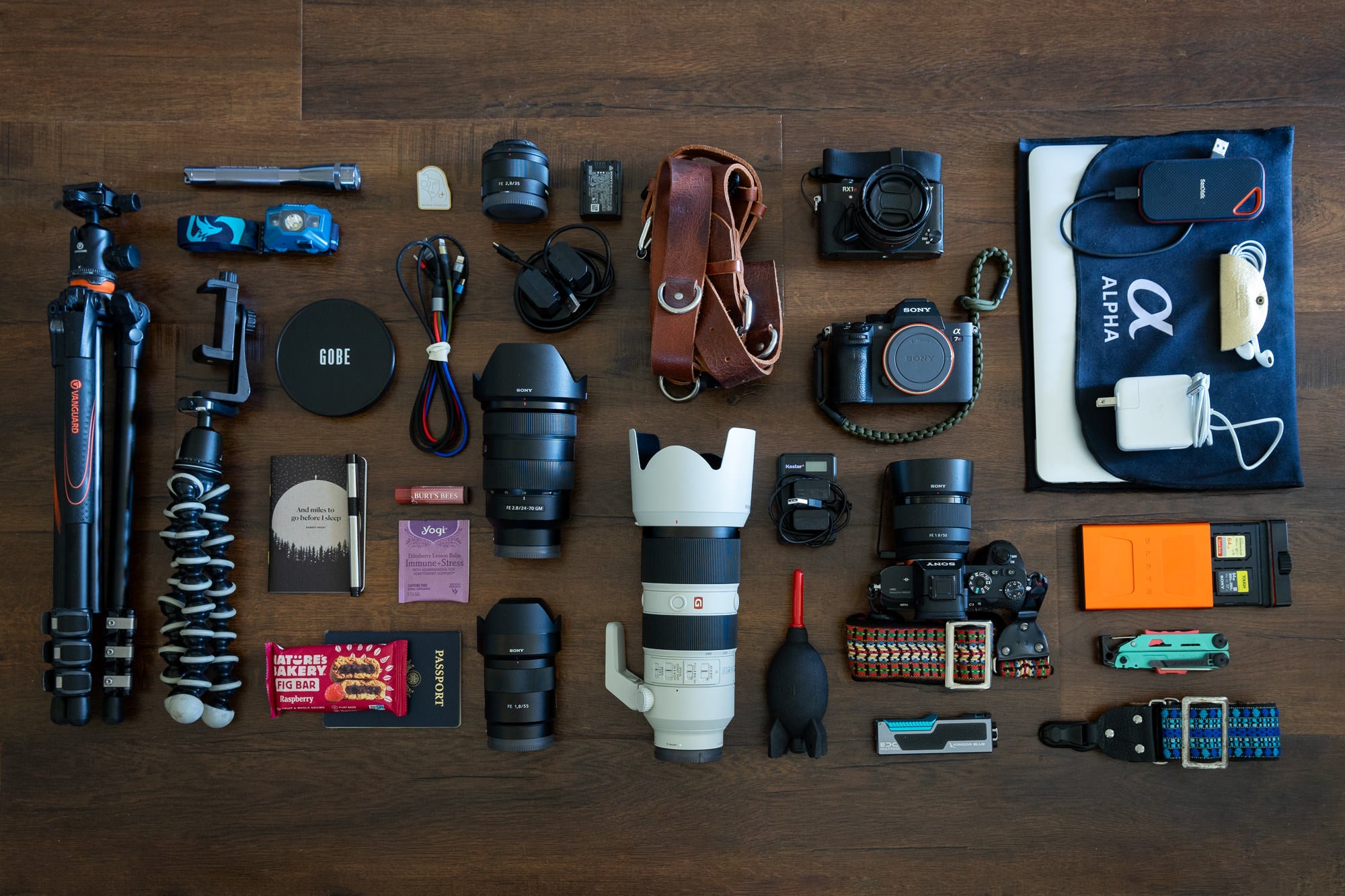
The Night Sky Timelapse Kit
Thru-hiker, documentary filmmaker and photographer Titouan Le Roux (@titooo_lr) likes to create timelapses while out in the backcountry. He pairs his go-to camera, the Sony Alpha 7S III, with the Sony 14mm f/1.8 G Master. “While I have used this lens on many video projects, taking advantage of its wide and dynamic look, I carried this lens during my thru-hike for a more specific purpose: night sky time lapses. Its 1.8 aperture allowed plenty of light in to shoot the starry sky and capture the Milky Way moving through the night during my journey through the high Sierra Nevada thanks to the built-in timelapse mode of the Sony Alpha 7S III. Plus, this lens is small and light, which makes it easier to carry with me on a hike.” See his complete kit and some of his work in What’s In My Bag: A Lightweight Kit For A Thru-Hiking Photographer & Filmmaker.

The G Master Prime Kit
Naomi Atherton (@naomijaneatherton) is a travel and landscape photographer originally from coastal Australia, now based in the heart of the Canadian Rockies. Her main camera for her photography, including astro, is the Sony Alpha 7 IV with the Sony Alpha 7R III as her backup. Her go-to astro lens is the Sony 24mm f/1.4 G Master. "The 24mm focal length is such a sweet spot for both astro and landscapes, so having this as a prime is very handy. It’s amazingly sharp, and a small and lightweight lens to have on hand. When the sun sets and the stars are visible, I’m always reaching for this lens to make astro magic." When she's in a punch, she says she's even used her Sony 35mm f/1.4 G Master for shooting the stars. Read more in What’s In My Bag: A Complete Backcountry Kit For Landscape Photography & More.
